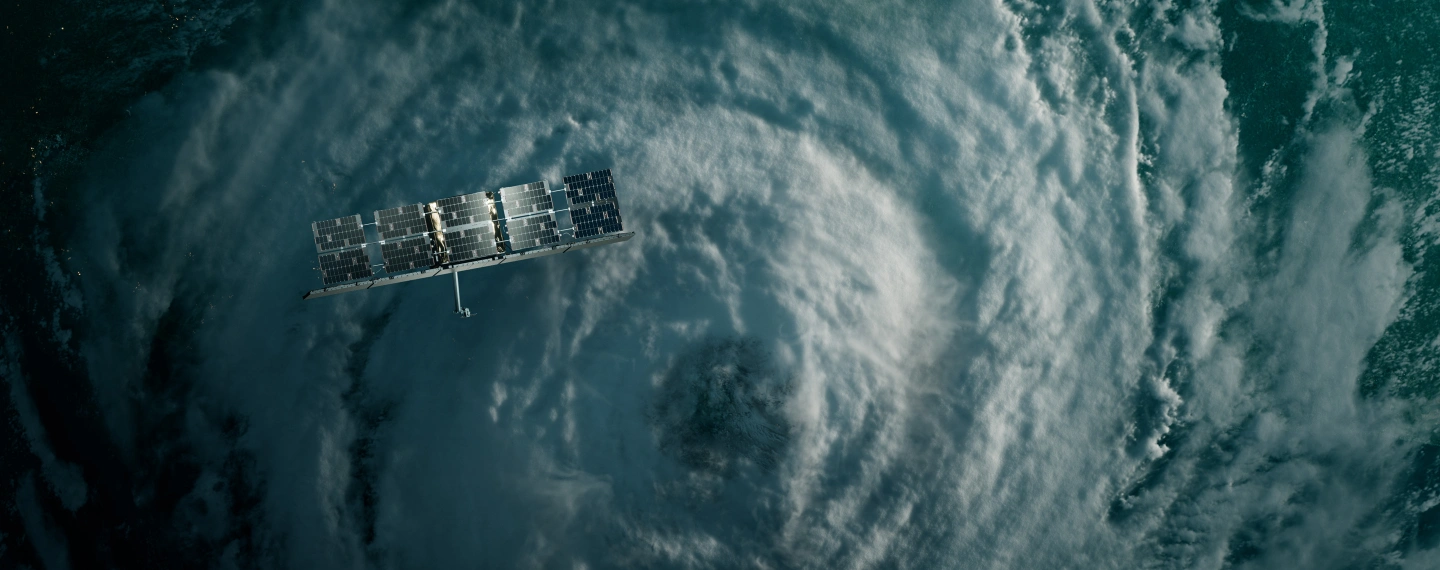Contact us
Get in touch with our experts to find out the possibilities daily truth data holds for your organization.
Persistent Monitoring
Natural catastrophe solutions
08 May 2024 | Solutions,Insurance Solutions
5 min read
In-house Meteorologist, ICEYE

Let’s delve deeper into these phenomena to enhance our understanding and see how our insights can improve disaster preparedness and response.
El Niño, which translates to "the child" in Spanish, was named by Peruvian fishermen who noted unusually warm water temperatures around Christmas several centuries ago. This warming and its counterpart, La Niña, which involves cooling of the water temperatures, are components of what is known as the El Niño Southern Oscillation (ENSO). This describes the coupled relationship between sea surface temperatures and atmospheric conditions across the Pacific and, ultimately, weather conditions around the globe.
During El Niño, we typically observe warmer water temperatures near the South American coast, which can lead to increased thunderstorm activity over the eastern and central Pacific Oceans. This activity can enhance tropical cyclone activity on the other side of the ocean, while areas like Australia may experience suppressed thunderstorm activity and drier conditions. La Niña essentially reverses these patterns, with suppressed activity over the Pacific and enhanced thunderstorms and wetter conditions over regions like Australia and Indonesia. If there is no strong indicator of El Niño / La Niña conditions or water temperatures are near average, then we are considered to be in a “neutral” phase.
Additionally, ENSO isn’t a two-dimensional phenomenon; the depth of the warmer or cooler water temperatures plays a role alongside the increase or decrease in thunderstorm activity across the Pacific Ocean.

Pacific Ocean water temperatures during El Niño and La Niña. Source: climate.gov.
To measure these phenomena, we monitor water temperatures across what's known as the Niño 3.4 zone in the equatorial Pacific. This zone helps define whether conditions align with El Niño, La Niña, or a neutral phase. It's crucial to understand that while patterns can be predicted, each El Niño or La Niña event can manifest differently based on various global factors.
El Niño or La Niña conditions do not just affect local regions; their impacts are global. During El Niño, the southern United States might see increased rainfall, while Australia could become drier. Conversely, La Niña can lead to drier conditions in the south of the U.S. and wetter conditions in parts of the Caribbean and Australia. The graphics below show that regardless of El Niño or La Niña conditions, their influence can be far-reaching.

 El Niño / La Niña global impact maps. Source: WHO.
El Niño / La Niña global impact maps. Source: WHO.
Considering some of the conditions I explained above, Colorado State University unveiled its predictions for the 2024 Atlantic hurricane season a few weeks ago. Their outlook for the season is unprecedented. We're looking at what could be a hectic season, with expectations of 23 named storms, including 11 hurricanes, five of which could reach Category 3 or higher. This marks the most aggressive forecast in the institution's three decades of projections.
Source: Colorado State University.
The driving forces behind this forecast are notably warm Atlantic Ocean temperatures and a transition to a La Niña weather pattern, both of which could significantly boost storm activity.
However, it's essential to approach these forecasts with caution. El Niño or La Niña conditions do not guarantee specific weather outcomes but rather indicate more favorable conditions for certain patterns to emerge. For example, while we might predict an above-average tropical season during La Niña, various factors, such as Saharan dust or specific jet stream patterns, could alter expected outcomes.
While comparisons to past seasons like 2010 and 2020 offer a frame of reference, they also highlight the unpredictability of impact. It's a stark reminder that it only takes one storm to change lives and landscapes.
 Typical La Niña influence on the Pacific and Atlantic hurricane season activity. Source: climate.gov.
Typical La Niña influence on the Pacific and Atlantic hurricane season activity. Source: climate.gov.
At ICEYE, we're not just monitoring these developments; we're actively working to refine our predictive data and near real-time flood analysis to aid in disaster preparedness and response, especially during the critical portion of hurricane season from August to October.
Our understanding of El Niño and La Niña and their global implications continues to evolve, enhancing our ability to predict and respond to the dynamic nature of our planet's weather systems.
In summary, while El Niño and La Niña provide frameworks for predicting weather patterns, each event is unique, and its impact can vary widely. As we continue to study these phenomena, our predictions will become more precise, aiding in better preparation and response strategies globally.
If you are interested, you can learn more about our Flood Solutions and download our past Flood Briefings at: https://www.iceye.com/resources/flood-briefings.
11 June 2025
6 Data-driven strategies emergency managers should use for hurricane preparedness
How Emergency Managers can ensure data readiness ahead of hurricane seasons.
Read more about 6 Data-driven strategies emergency managers should use for hurricane preparedness →27 May 2025
Hurricane Solution FAQ for insurers
ICEYE’s new Hurricane Solution offers something insurers have never had before: observed wind and...
Read more about Hurricane Solution FAQ for insurers →24 April 2025
Forecasting complexity: What the 2025 hurricane season brings for disaster response
Explore what the 2025 hurricane season could bring and how real-time observation enhances hurricane...
Read more about Forecasting complexity: What the 2025 hurricane season brings for disaster response →